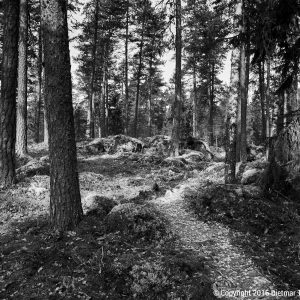Hasegawa Tōhaku
In the year 2000 an exhibition in Zürich, Switzerland was dedicated to a single Japanese painter, or even: a single painting of that artist. That painting, in reviews of the exhibition, was hailed as an equal to da Vinci’s Mona Lisa and as the most important Japanese ink painting. That is quite some hyperbole, not often seen in describing Asian works of art. Still, I think, it was deserved. And if you have read the articles in this series so far, you are well prepared to see it as well, because everything we have found so far, now comes together in one single picture.
What I am talking about is Hasegawa Tōhaku’s (1539-1610) Shōrin-zu Byōbu (“Pine Forest”). As an exception, it might be worth this time to spend a few lines on Tōhaku’s biography. Born in the country side, he became a professional painter at the age of 20. He came from a painting school named Kenō, which specialized in colourful, golden-leaf covered paintings for the rich and mighty. This brought him to the court of the ruling Toyotomi Hideyoshi.
(more…)







